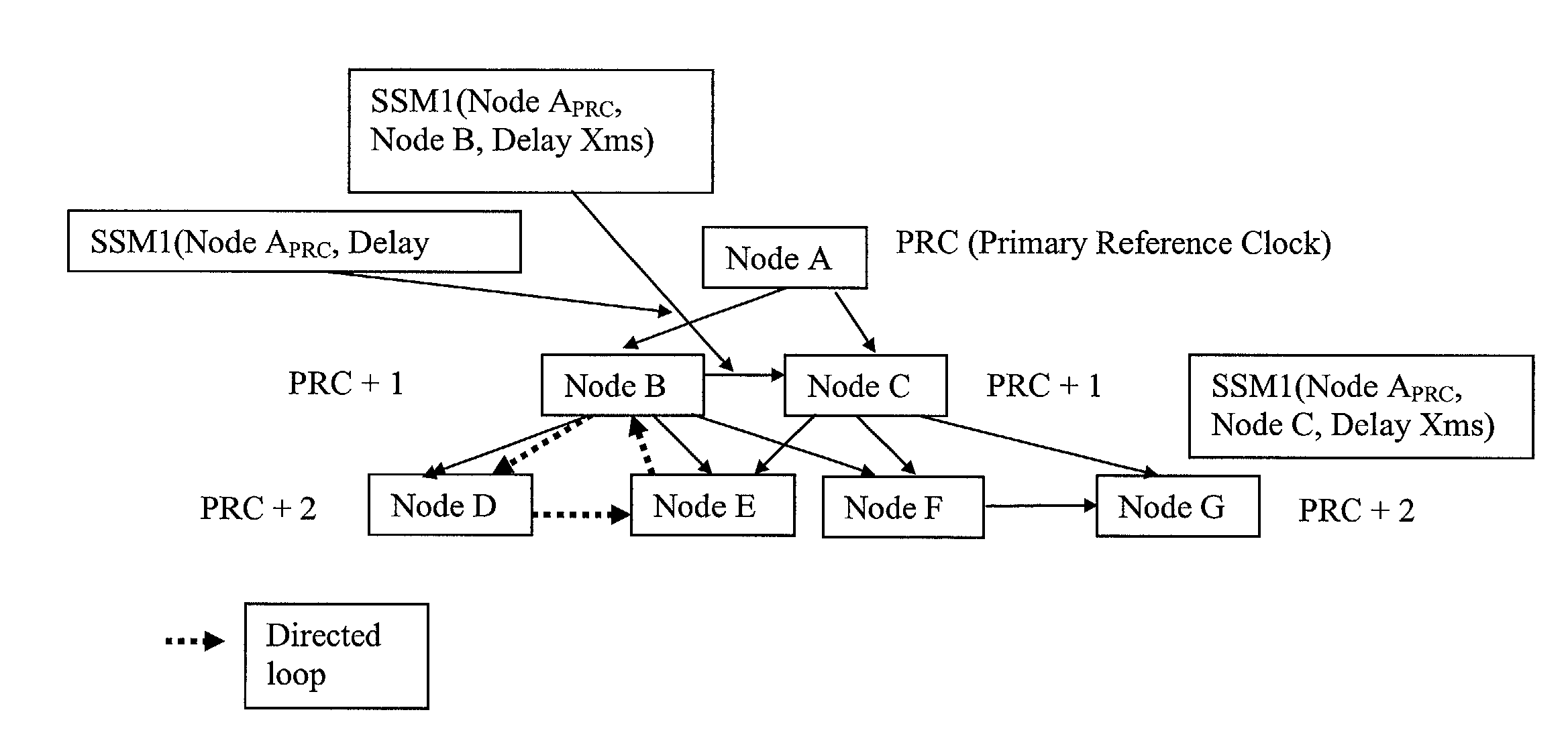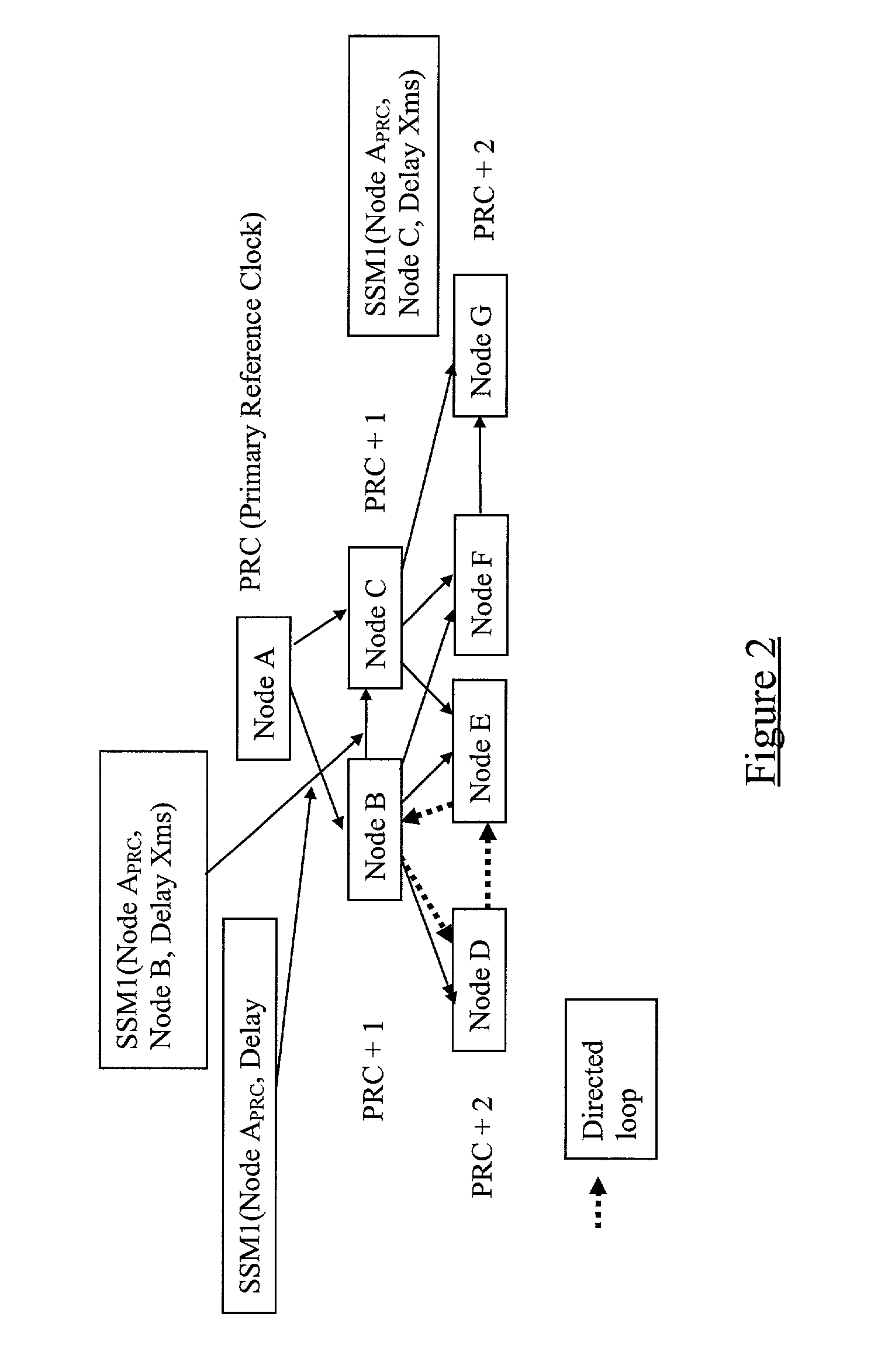Telecommunication network synchronization
a technology of telecommunication network and synchronisation process, which is applied in the direction of data switching network, frequency-division multiplex, instruments, etc., can solve the problems of reducing the overall time taken to synchronise the network, and achieve the effect of fast stabilisation of the network synchronisation process and mitiging the disadvantages of known synchronisation network
- Summary
- Abstract
- Description
- Claims
- Application Information
AI Technical Summary
Benefits of technology
Problems solved by technology
Method used
Image
Examples
Embodiment Construction
[0066]There is illustrated in FIG. 1 a multi-node telecommunication network comprising Nodes A to G. The Nodes are interconnected by data links which may carry user data, signalling data, or a combination of both. In one example, the network of FIG. 1 might be a UMTS Terrestrial Radio Access Network (UTRAN), where certain of the nodes (for example Node A) might be Radio Network Controllers (RNCs) whilst others of the nodes (for example Nodes B to G) might be Radio Base Stations (RBSs).
[0067]Node A is a so-called “master Node” and is connected to a Primary Reference Clock (PRC). As has already been outlined above, the slave Nodes B to G are able to synchronise with another network Node (and hence with the network as a whole) using data signals received on an incoming data links. The accuracy of the synchronisation will depend to a large extent upon the remoteness of the node which is being synchronised from the master node. An important consideration therefore in choosing which incom...
PUM
 Login to View More
Login to View More Abstract
Description
Claims
Application Information
 Login to View More
Login to View More - R&D
- Intellectual Property
- Life Sciences
- Materials
- Tech Scout
- Unparalleled Data Quality
- Higher Quality Content
- 60% Fewer Hallucinations
Browse by: Latest US Patents, China's latest patents, Technical Efficacy Thesaurus, Application Domain, Technology Topic, Popular Technical Reports.
© 2025 PatSnap. All rights reserved.Legal|Privacy policy|Modern Slavery Act Transparency Statement|Sitemap|About US| Contact US: help@patsnap.com



